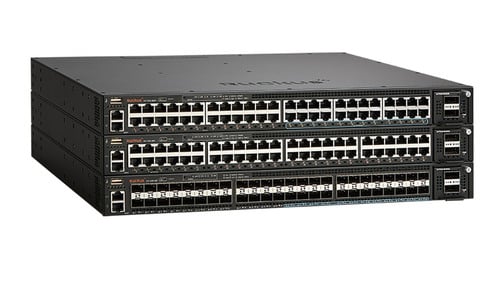The evolution of networking technologies has led to the emergence of next-generation Ethernet, a cutting-edge advancement poised to redefine the landscape of data communication. This article delves into key features, advancements, and considerations surrounding next-generation Ethernet, showcasing its potential to revolutionize connectivity in the digital age.
Key Features of Next-Generation Ethernet:
Higher Data Transfer Rates:
Next generation ethernet promises significantly higher data transfer rates compared to its predecessors. With advancements like 25 Gigabit Ethernet (25GbE), 40 Gigabit Ethernet (40GbE), 100 Gigabit Ethernet (100GbE), and beyond, these speeds cater to the escalating demands of bandwidth-intensive applications and data-intensive tasks.
Enhanced Energy Efficiency:
Energy efficiency is a hallmark of next-generation Ethernet, with a focus on optimizing power consumption without compromising performance. This is crucial for sustainability and aligns with the growing emphasis on environmentally conscious networking solutions.
Multi-Gigabit and NBASE-T Technology:
Next-generation Ethernet embraces multi-Gigabit speeds, including 2.5 Gigabit and 5 Gigabit Ethernet, as well as NBASE-T technology. This enables flexible network upgrades, allowing organizations to leverage existing cabling infrastructure while achieving higher data rates.
Low Latency for Real-Time Applications:
Reduced latency is a key feature of next-generation Ethernet, enhancing the responsiveness of real-time applications such as online gaming, video conferencing, and financial transactions. Low-latency networking is critical for delivering seamless user experiences.
Flexibility with Software-Defined Networking (SDN):
Next-generation Ethernet aligns with the principles of Software-Defined Networking (SDN), offering enhanced flexibility and programmability. SDN allows for dynamic network management, enabling administrators to adapt to changing requirements and optimize resource allocation.
Integration of Advanced Security Measures:
Security is a paramount consideration in next-generation Ethernet. The integration of advanced security measures, such as robust encryption protocols and secure authentication mechanisms, addresses the evolving threat landscape and enhances network protection.
Advancements in Next-Generation Ethernet:
400 Gigabit Ethernet (400GbE):
At the forefront of next-generation Ethernet, 400GbE represents a significant leap in data transfer rates. Designed to meet the demands of data-intensive applications, 400GbE offers unparalleled speed and bandwidth for high-performance networking.
Evolving Standards:
Next-generation Ethernet evolves with the development of new standards such as 802.3bz (NBASE-T) and 802.3cd (400GbE). These standards provide a framework for interoperability, ensuring seamless integration of next-generation Ethernet technologies.
Intent-Based Networking:
Intent-based networking is a transformative concept within next-generation Ethernet. It involves network automation and orchestration based on high-level business intent, simplifying management tasks and enabling more efficient network operations.
Coexistence with Previous Ethernet Standards:
Next-generation Ethernet is designed to coexist with previous Ethernet standards, allowing for smooth transitions and interoperability. This ensures compatibility with existing network infrastructure, easing the adoption process for organizations.
Considerations for Adopting Next-Generation Ethernet:
Infrastructure Readiness:
Assess the readiness of existing infrastructure to support next-generation Ethernet. Consider factors such as cabling, switches, and network interfaces to ensure a seamless integration.
Application Requirements:
Evaluate the specific requirements of applications running on the network. Next-generation Ethernet is particularly well-suited for environments with high bandwidth demands, making it essential to align technology choices with application needs.
Budgetary Considerations:
While next-generation Ethernet offers unparalleled performance, organizations should consider budgetary constraints. Evaluate the cost-benefit ratio and plan for a phased adoption approach if needed.
Future-Proofing:
Given the rapid pace of technological advancements, consider next-generation Ethernet as a means of future-proofing the network. This involves anticipating future bandwidth requirements and aligning infrastructure upgrades accordingly.
Next-generation Ethernet
represents a leap forward in networking capabilities, offering higher speeds,
enhanced efficiency, and a foundation for innovative applications. By
understanding its key features, advancements, and considerations, organizations
can position themselves at the forefront of connectivity, ready to embrace the
challenges and opportunities of the digital future.
For more info. Visit us:
Fast connectivity for Stadiums





Comments